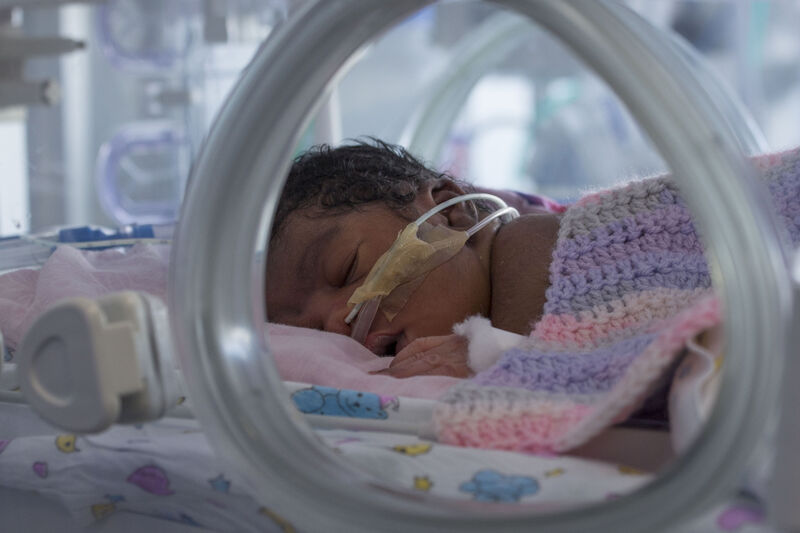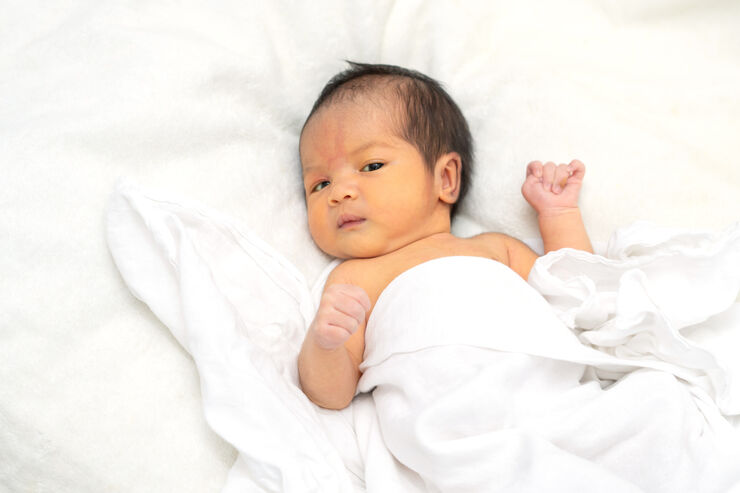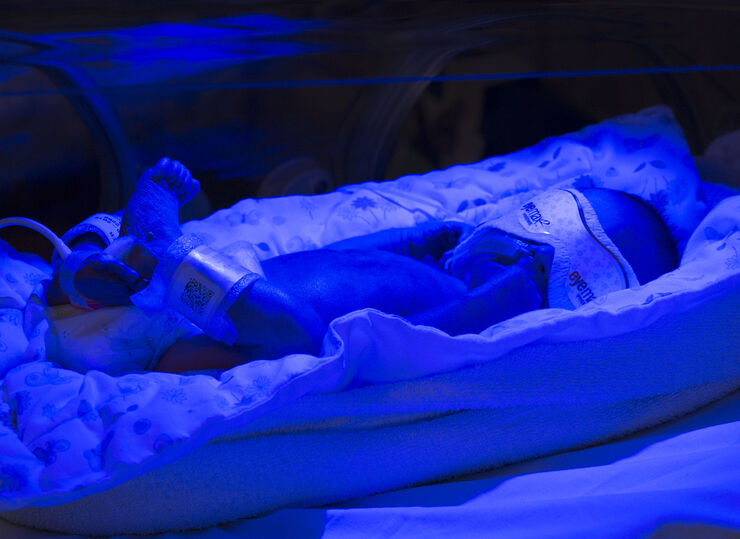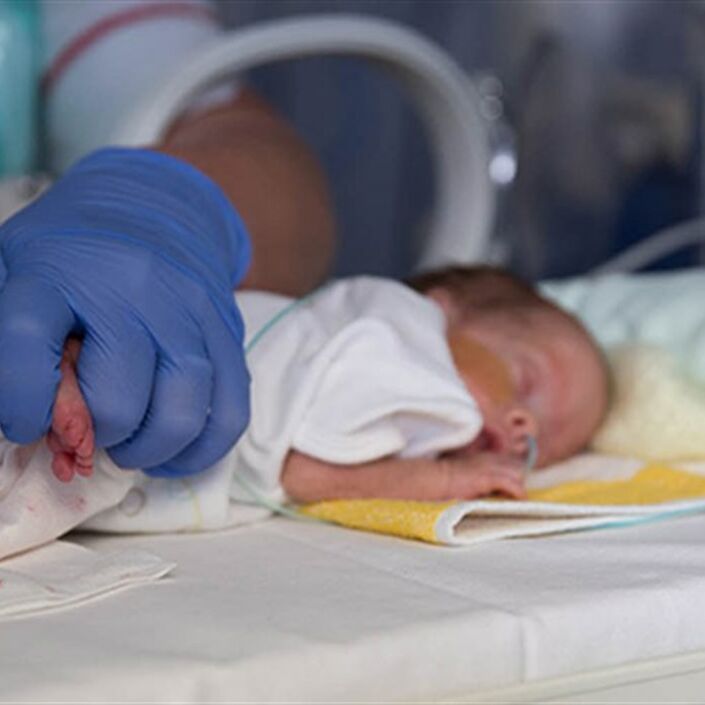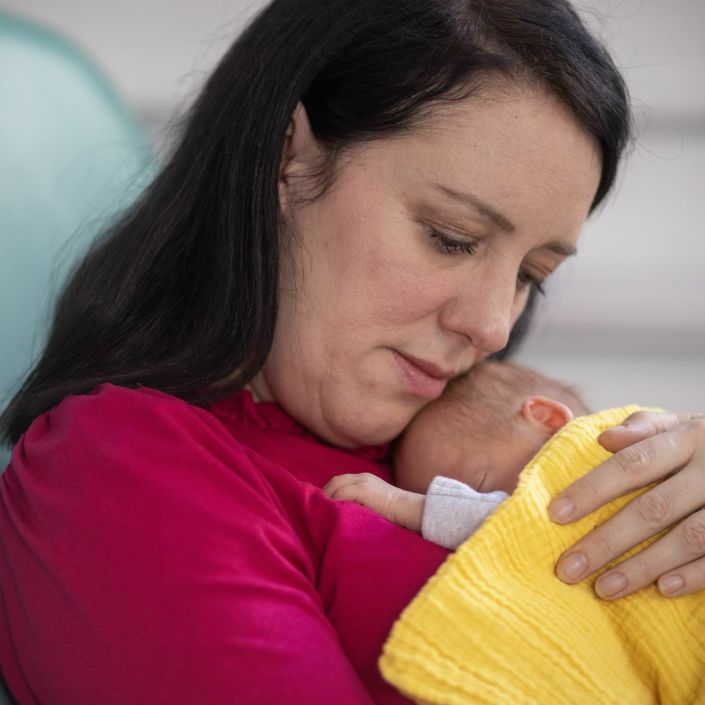Jaundice (jawn-diss) is the name for yellowing of the skin and the whites of the eyes. It is very common for newborn babies to get jaundice. In most cases it is harmless and goes away without needing treatment by the time your baby is about two weeks old.
Sometimes jaundice can be serious and may be caused by a medical problem. Serious cases of newborn jaundice are more common in babies born premature. Because it can sometimes be serious, your midwife or baby’s doctor needs to know if they have jaundice. Your baby can then get any treatment they need quickly.
What causes jaundice?
The yellow colour is caused by a build-up of a substance called bilirubin (billy-roo-bin).
Bilirubin is a normal body chemical, which is produced when red blood cells are broken down and replaced by fresh cells. Bilirubin is then processed by the liver and leaves the body in urine (pee) and stools (poo).
Jaundice is common in newborn babies because the baby’s liver is not developed enough in the first few days to process all the bilirubin that is produced. Bilirubin then builds up in the blood, which causes jaundice.
Doctors call this ‘physiological jaundice’, which means it is not caused by a medical problem. This is the most common type of jaundice and starts at about two days after birth, but is usually gone by about two weeks.
Other types of jaundice
Other types of jaundice may be caused by serious medical problems. Jaundice that occurs within the first 24 hours of life, which doctors call ‘early jaundice’, could be caused by conditions such as:
There is also a type of jaundice which causes babies to be jaundiced for longer (after they are around two weeks old). This is called ‘prolonged jaundice’. It can also be referred to as ‘breastmilk jaundice’ because it is much more common in babies who are fed with their mother’s milk.
Doctors are not sure why this happens, but it does not harm the baby and will go away without treatment. This type of jaundice can sometimes carry on for up to 12 weeks, but this does not mean that feeding with breast milk should stop.
Prolonged jaundice is usually harmless, but may occasionally be caused by more serious medical problems. Babies with prolonged jaundice will usually have some extra blood tests to look for any medical problems. This is often at a clinic in the hospital or may be done at home by a community midwife in some areas.
In most cases, no medical condition is found and the jaundice gradually goes away without needing treatment, but occasionally important medical problems are picked up by these tests.
Which babies are most likely to get newborn jaundice?
Jaundice in newborn babies is very common, but in most cases is not severe enough to need treatment. There are some things which make a baby more likely to have jaundice that needs treating:
- Being born premature (less than 38 weeks) – the earlier a baby is born, the more likely they are to need treatment for jaundice.
- Having a low birth weight.
- Being male.
- Being from an Asian or Black family.
- Getting jaundice in the first 24 hours after birth.
- Having a brother or sister who needed treatment for jaundice after birth.
- Being only fed with breastmilk.
Babies born prematurely are more likely to get jaundice. If they have jaundice, it is more likely to be severe and tends to last longer than in full term babies.
After your baby is born, they will be examined, both in hospital and at home. Every time your baby is examined, your care team will be checking for jaundice. You will be encouraged to check your baby too, especially after you take them home. If your baby has jaundice, their skin and the whites of their eyes will appear yellowish.
Signs of jaundice in babies with darker skin tones
It can be more difficult to tell if a baby has jaundice if they have darker skin, because the yellowing may be less obvious. Gently pressing on the tip of their nose or on their forehead can make it easier to see any yellowing.
The whites of the eyes should normally always be white, no matter how dark your baby’s skin. So checking your baby’s eyes is a good way to look for jaundice. It is best to check your baby in bright light, preferably daylight.
Tell your midwife, health visitor, or GP the same day if you think your baby has jaundice.
